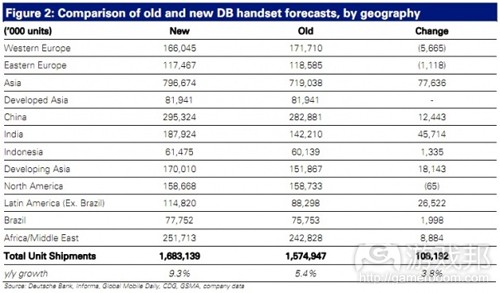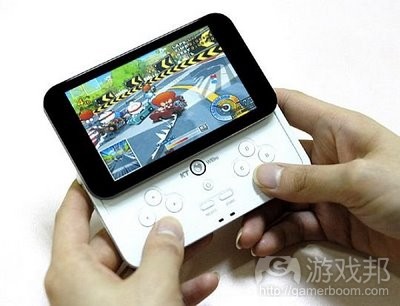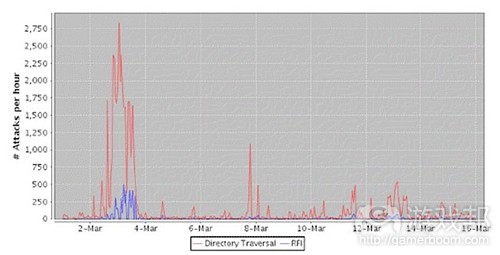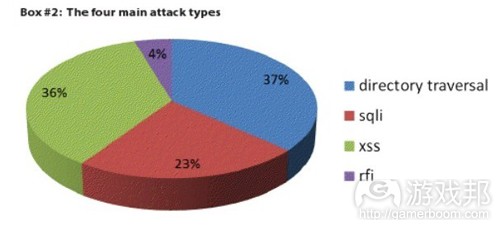每日观察:关注手机游戏玩家用户结构调查(7.26)
1)诺基亚日前宣布Ovi Store目前应用数量已经超过5万,Symbian用户基础也接近2.25亿。该应用商店每日下载量已达650万次,比4月份增加了150万次。
2)Deutsche Bank最近调查结果预测,2011年全球市场的手机销量将达16.8亿部,高于今年初预计的15.7亿部。
该报告指出,出现这种情况的主要原因是新兴市场国家山寨手机的兴起,但由于山寨手机并非通过传统的销售渠道发售,因此暂时无法判断实际的手机市场规模。
今年智能手机的出售量将比2010年增长30%,总数将达4.23亿部,其中Android手机占2.2亿部,苹果iPhone占8000万部,诺基亚7000万部,RIM的黑莓手机为5000万部。
预计2012年智能手机价格将降至150美元以下,销量增幅将突破36%。
3)市场调研公司Parks Associates最新报告表明,自2007年以来,年长的游戏玩家数量已增加两倍以上,手机游戏的出现推动了这一趋势的发展。
调查指出,《愤怒的小鸟》、《水果忍者》、《Words With Friends》等新简单易上手的游戏吸引了更高龄的玩家和女性用户;另外,约有三分之二的智能手机用户经常玩手机游戏,超过三分之一的13岁以上美国人每个月都玩过一款手机游戏。
4)引擎开发商Unity Technologies宣布准备在韩国开设新工作室,为Unity在当地的未来业务拓展提供本地化服务和支持。
Unity韩国工作室将座落于首尔,并为韩国开发者提供网页、iOS、Android和掌机平台的游戏开发工具。William Hugo Yang将负责掌管新工作室事务(游戏邦注:他曾是韩国游戏产生咨询师和分析师)。
该公司曾于本月初宣布融资1200万美元,意在加快进军亚洲市场的步伐。
5)据mobile-ent报道,苹果App Store日前新增面向阿尔及利亚、安哥拉、冰岛、坦桑尼亚等33个国家、地区开放的服务,该应用商店目前数量共达123个,本月初宣布其应用累计下载量已达150亿次。
6)PriceGrabber最新调查表明,35%受访者有意购买苹果iPhone 5。在这些有意购买iPhone 5的受访者中,有51%自称会在iPhone 5发布当年就付诸行动,30%称会在2011年底采取行动,14%称会在第一个月内就购买,还有7%称会在发布首周就立即行动。
苹果不久前曾报告称iPhone在未推出任何新机型时就突破了2000万销量,相信iPhone 5问世后这一数据更将再创记录。调查还指出,许多用户希望iPhone 5拥有更长的电池寿命、更低的成本,更优化的摄像头或者更大的屏幕;还有46%用户表示希望它支持4G网络。
7)据pocketgamer报道,美国高通近日收购动作识别技术公司GestureTek的部分资产,其中包括多种动作识别知识产权,以及关键工程资源。美国高通将把这一技术植入其当前及下一代Snapdragon处理器中,支持原始设备制造商使用基于人类自然动作的用户界面,生产智能手机、平板电脑和家庭娱乐设备。
8)RIM于本周一宣布裁员2000人,其比例占RIM全体员工的10%(游戏邦注:裁员后的RIM员工总数约1万7千人)。观察者认为,尽管RIM曾在上月称这是为“成本优化项目”服务,但这次的大规模裁员行动实际上反映出该公司的转型之痛。
自2006年以后,RIM员工数量急剧膨胀,但黑莓手机的销量却并不乐观,落后于苹果、三星甚至是诺基亚智能手机。另外,RIM在去年4月份收购了QNX,但之后却一直没有推出基于该操作系统的新手机,尽管后来宣布将推出Bolad手机,但采用的却是黑莓操作系统而非QNX,他们甚至并不打算升级QNX操作系统。
9)数据安全公司Imperva最新调查结果表明,网络应用程序平均每小时被攻击27次(或者每分钟被攻击2次)。有些网络应用在最高峰时期,每小时甚至被攻击2.5万次,平均每秒7次。
调查指出,从2010年12月至2011年5月,61%的网络攻击行为来自美国僵尸网站;约有10%攻击行为来自中国,瑞典和法国也同样是重要网络攻击来源。
Imperva指出现存网络攻击行为主要有四种形式:目录遍历(directory traversal)、跨站脚本攻击(Cross Site Scripting,常简称为XSS),资料隐码攻击(SQL injection,简称sqli)以及remote file inclusion(RFI)。其中目录遍历占37%,Sqli占23%,XSS占36%,RFI占4%。(本文为游戏邦/gamerboom.com编译,转载请联系:游戏邦)
1)Nokia reports its app store has 50,000 apps, is doing 6.5 million downloads daily
by Keith Andrew
There’s confusion about its name, but hidden amongst Nokia’s quarterly earnings report was news that its app store (once called Ovi) continues to grow.
The Finnish giant claims its marketplace now boasts over 50,000 apps – up 2,000 apps alone since June – owing to “increased demand for apps from the approximately 225-million strong Symbian customer base”.
Ovi and up
Indeed, said base has taken the platform’s daily download rate to 6.5 million, a rise of 1.5 million from the ratio Nokia publicised in April.
Just where this userbase will go, however, when Nokia moves wholesale onto Windows Phone (Nokia already dubbing Symbian as a ‘legacy platform’) remains to be seen, however.
Nokia has already confirmed it intends to maintain its own marketplace after the transition – rebranded with Nokia’s own colours – though the logistics of this are unclear, given Microsoft currently only affords OEMs a section of the existing Windows Phone Marketplace, rather than a dedicated store.(source: pocketgamer)
2)Cell phone market bigger than we thought
By Erica Ogg
The researchers at Deutsche Bank are throwing out old estimates of the worldwide mobile phone market because they say we’re still underestimating its size. The reason? They’re still trying to grasp how many cell phones are made and sold in China. As a result, Deutsche Bank is increasing its 2011 forecast of the worldwide market to 1.68 billion phones, up from 1.57 billion earlier this year.
“The bulk of this change comes from an additional 115 million GSM 2G units going into emerging markets,” a research note from the firm says.The problem with counting the phones sold in China is that a sizable chunk of them are “Shanzhai” phones, or knock-off phones that are cheap to make and popular in China and in neighboring emerging markets. The manufacturers of these handsets don’t have official licenses to build phones from the Chinese government and typically do not sell them through what we might think of as traditional retail channels.
But even though Deutsche Bank has talked to contacts in the country to get a better feel for the true number of phones being made and sold, it says it’s still difficult to know the true size.
“It’s also worth pointing out that we could still be missing some number of shanzhai phones…In a note following our recent China trip, we pointed out that many of the China handset makers sell $20 phones. These go to emerging markets prepaid customers, and we know no data source capable of tracking these units,” Deutsche Bank said.
Zeroing in on the true size of that market is not the only factor increasing this year’s forecast though. Phones using LTE technology are rolling out faster than anticipated in the U.S.
Previously, Deutsche Bank was expecting 3 million LTE phones this year, now it’s doubling that number.
In addition to the worldwide numbers in basic handsets growing, consumers still just can’t get enough of smartphones. Smartphones shipments will grow by 30 percent this year over 2010 levels to a total of 423 million units, with Android phones accounting for 220 million of those, Apple iOS phones for 80 million, Nokia 70 million, and Research in Motion selling 50 million BlackBerry handsets, according to Deutsche Bank.
This year’s growth isn’t expected to slow any time soon either. DB is upping its estimate for smartphone growth in 2012 too. Anticipating smartphone prices to drop below $150 next year, the group is expecting overall unit sales growth to hit 36 percent.(source:gigaom)
3)Report: Mobile Games More Than Doubled Older Gamer Demographic Since 2007
by Frank Cifaldi
The number of gamers in older demographics has more than doubled since 2007, according to recently-published information by a consumer technology research firm, citing games that include Rovio’s Angry Birds.
The statistic comes as part of a report by Parks Associates called Mobile/Portable Gaming: Market Update, which claims to show that mobile devices have contributed significantly to an expanding game-playing demographic.
“Traditional game companies have expressed concerns about mobile gaming devaluing the market, but in reality, mobile gaming has increased the overall user base and attracted new demographics,” said analyst Pietro Macchiarella.
“The broad appeal of mobile games such as Angry Birds, Fruit Ninja, and Words With Friends and increasing ease with which people can download them have attracted less traditional gamers, including a growing number of older players and females.”
In addition, Parks’ research also suggests that two-thirds of smartphone users regularly play games on their phones, and that over one-third of the United States population over the age of 13 plays a mobile game every month.
The firm also credits market penetration of smartphones and tablets, app store competition, and better payment methods (including free-to-play) as other factors driving gameplay growth.(source: gamasutra)
4)Unity Technologies Opening South Korean Offices
by Mike Rose
Engine developer Unity Technologies is set to launch a new subsidiary in South Korea, which will serve as a localization and support center for future Unity expansion in the country.
Unity Korea will be based in Seoul, and provide Korean developers with support for its development platform that currently spans web games, iOS, Android and consoles.
The new division will be run by country manager William Hugo Yang, who has previously worked as a consultant and analyst in the Korean gaming industry.
Yang explained, “As the Korean development community continues to grow, we will provide our expanding Korean user base fully localized tools and documentation, as well as dedicated technical support.”
Unity Technologies CEO David Helgason added, “Our strong following in the Korean developer community tells us that Unity is the perfect solution for Korea’s dynamic games industry, which requires a cross platform solution enabling casual, MMORPG, mobile, PC and console games development on current and emerging platforms.”
“The launch of our Korean subsidiary will allow us to better serve the passionate, talented Unity community in this dynamic market.”
Earlier in the month, the company announced that it had secured $12 million in a series B financing round, as a means of accelerating its plans to expand into Asian markets. (source:gamasutra)
5)Apple expands App Store to 33 new countries
by Tim Green
Great news for Apple fanboys in Uzbekistan.
The move brings the total number of iTunes App Stores to 123, and is part of a general expansion of the service that includes the launch of the Mac App Store for laptops and the upcoming iCloud service.
The full list of new territories is: Algeria, Angola, Anguilla, Antigua, and Barbuda, Azerbaijan, Bahamas, Bahrain, Barbados, Belarus, Belize, Bermuda, Bolivia, British Virgin Islands, Brunei, Cayman Islands, Cyprus, Dominica, Ghana, Grenada, Guyana, Iceland, Montserrat, Nigeria, Oman, St. Kitts and Nevis, St. Lucia, St. Vincent and The Grenadines, Suriname, Tanzania, Trinidad and Tobago, Turks and Caicos, Uzbekistan, Yemen.
The App Store reached a new milestone of 15 billion apps downloaded earlier this month.(source:mobile-ent)
6)Survey: 35% of consumers will buy iPhone 5
By: Marin Perez
We all know that the iPhone 5 will be a popular device but a new survey from PriceGrabber suggests that it will be a massive hit, as 35 percent of those surveyed planned to purchase it.
Of those who said they would purchase the iPhone 5, 51 percent indicated that they will buy the smartphone within the first year of release, 30 percent will purchase it before the end of 2011, 14 percent will buy it within the first month, and 7 percent will buy it within the first week. We’ve seen previous iPhones sell millions on its opening weekend and the iPhone 5 could outdo those.
Apple just reported a record quarter where it sold more than 20 million iPhone units without even having a shiny, new device to push. The next-generation iPhone should help it easily surpass that number when you consider that it will be back-to-school season.
“Our survey data confirms the strong following Apple has built around its iPhone, with more than one-third of consumers planning to upgrade to the latest model only a little over a year following the release of the iPhone 4,” stated Graham Jones, general manager of PriceGrabber, in a prepared statement. “Anticipation and brand loyalty are certainly high, but in today’s 24-7 work culture and uncertain economic environment, consumers are cautious to look for a reasonably priced phone that will perform optimally over an extended time period.”
The survey also asked what users want from the next-generation iPhone and most said they want better battery life, cost reduction, improved camera or a larger screen. A significant portion (46 percent) said 4G would be important to them but I’m still not banking on the next iPhone to have 4G LTE – it might be a 4G phone for AT&T’s HSPA+ network or even T-Mobile’s but 4G LTE modem technology still has too many compromises.
Of course, these surveys aren’t always an accurate representation of the market because it is very simple to say you plan to buy something but things can get in the way. Still, this is another sign that the next iPhone will be a success. (source:intomobile)
7)Qualcomm acquires gesture recognition technology and staff from GestureTek
by Jon Jordan
Continuing its push into emerging areas of mobile tech, Qualcomm has announced it’s acquired certain assets from gesture recognition outfit GestureTek.
These include various gesture recognition intellectual properties as well as key engineering resources, by which we assume they mean people.
The result will be seen as this technology is integrated into Qualcomm’s current and next-generation Snapdragon processors. The company says this will provide OEMs with the capability to produce smartphones, tablets and home entertainment devices using user interfaces based on natural human gestures.
Waving not drowning
“Applications processors are enabling a range of new ways for consumers to interface with their home entertainment and mobile devices,” said Steve Mollenkopf, executive vice president and group president, Qualcomm.
“Our acquisition of key technology and assets from GestureTek will strengthen Qualcomm’s smartphone product portfolio and enable our customers to launch products with new and compelling user experiences.”
GestureTek will retain assets related to its gesture-controlled public display and digital signage business however.(source:pocketgamer)
8)Why RIM is cutting 2,000 jobs
By Kevin C. Tofel
On Monday Research In Motion announced details of job cuts, reducing its employee count by 2,000 positions. The cuts account for just over 10 percent of RIM’s overall workforce, which after the staff reductions will number 17,000 people. Although RIM pointed out a forthcoming “cost optimization program” last month, the layoffs are another example of how slowly RIM is transitioning away from its legacy business to better compete in the smartphone and tablet market.
RIM’s workforce has ballooned since 2006, indicating on the surface that it’s keeping pace with the fast-growing mobile-device segment. Unfortunately, sales of BlackBerry phones aren’t.
Companies such as Apple, Samsung and even beleaguered Nokia all sell more smartphones than RIM, and the company only makes smartphones — with the exception of the new PlayBook tablet, which has some pros but more cons to some and doesn’t appear to be selling well.
The entire situation reemphasizes that RIM has been too slow to change in a market that’s moving fast. The BlackBerry Storm, an attempt at an all-touchscreen device, was met with fanfare in 2008, but it never materialized as a solid competitor to Apple’s iPhone. Last year’s BlackBerry Torch was more evolution than revolution.
And the company’s plan to run future phones on a QNX-powered platform makes sense, but RIM bought QNX in April of 2010 and there are still no handsets announced for the new operating system. Instead, new Bold handsets are the latest offerings announced; they appear delayed and will run a new version of BlackBerry OS, not QNX. They’re also not expected to be upgradable to QNX either.(source:gigaom)
9)Report: Web Applications Attacked Every 2 Minutes
By Dan Rowinski
Data security company Imperva released research today that says Web applications are probed or attacked 27 times an hour, or once every two minutes. At the peak of attacks, some Web applications see probes or attacks 25,000 times an hour, or seven times per second. The research gives concrete numbers to what security researchers, governments and enterprises have known for a while – their networks are persistently under attack.
When researchers look for malware and attack vectors, the tendency is to look for vulnerabilities in portals or code. Yet, most of the major data breaches in recent news have been the result of attacks on Web apps like email and data systems. The goal for hackers is to break applications with automated attacks searching for vulnerabilities until the apps crack and spill data straight into the hands of the hackers.
Imperva saw three distinct trends in observing Web app attacks from Dec. 2010 to May 2011: the attacks use four distinct strategies, they are automated and they originate in the United States.
Imperva says that 61% of attacks originate from botnets in the U.S. Yet, that does not mean that those doing the actual attacks are located in the U.S. When botnet controllers are looking to hit a specific target, they want to use computers closest to their bounty. The important thing about the attacks coming from the U.S. is that a lot of American’s computers are infected with malware, thus part of some botnet. For instance, if hackers want to attack the U.S. government, the command-and-control center of the botnet might activate the 1,000 computers closest to Washington, D.C. About 10% of attacks originated from China, with Sweden and France also large contributors. China makes sense for its raw number of hackers while Sweden has some of the most universal and robust broadband in the world.
While Imperva was not specifically monitoring the Lulz Security attacks at their peak in June, they noted that they were very similar to what its research had turned up. A “hack” is an esoteric term. As far as the general public knows, the attacks were some complicated computer stuff that led to data being stolen. Yet, security researchers see four common types of attacks, what Imperva calls “the unfab four”: directory traversal, cross-Site Scripting, SQL injection and remote file inclusion (RFI). These attacks come in two waves: scan and exploit. An attacker may use directory traversal and cross-site ccripting during a scan phase and then hit it with an SQL injection or an RFI in the exploit phase. (source:readwriteweb)
















































 闽公网安备35020302001549号
闽公网安备35020302001549号